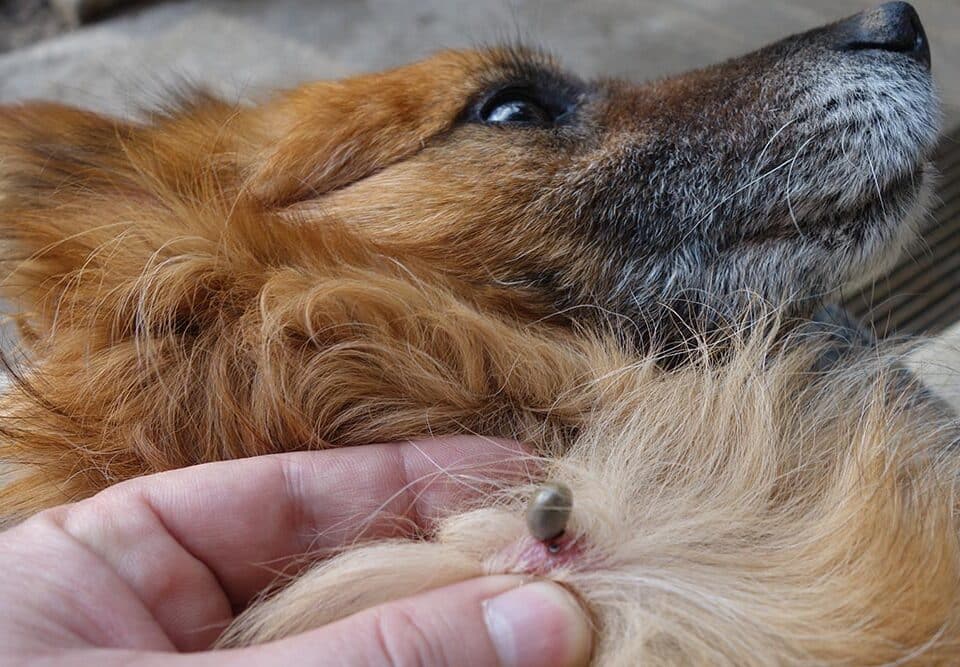Got a tick on your dog? Don’t worry, it happens! Here’s a quick guide on how to remove it safely and effectively.
- Gather the necessary supplies before you start—tweezers, gloves, and isopropyl alcohol.
- Ensure it’s really a tick and not a skin tag or some other bump.
- Follow the six essential steps to remove the tick without causing harm.
- Learn what to do next to keep your dog safe and healthy.
Finding a tick on a dog can be alarming, but it’s a common issue dog owners face. The key is to stay calm and know how to remove it properly.
Before jumping into action, make sure you have tweezers, isopropyl alcohol, gloves, soap, and a small container with a lid. It’s also important to mentally prepare, as removing a tick can be a bit uncomfortable.
Ticks can often be confused with other lumps, so double-check. Ticks are usually tan, brown, or black and have eight legs. They hide in spots like the torso, between toes, and around the ears and face. Ensure you see legs before you start pulling!
Start by putting on gloves. Use tweezers to grab the tick’s head as close to the skin as possible. Avoid pinching your dog, and be careful not to break off the mouth parts.
Contrary to some beliefs, don’t twist the tick. Steadily pull it straight out. This reduces the risk of leaving parts behind, which can lead to infection.
After removal, place the tick in a container with isopropyl alcohol. This will kill it and prevent it from biting anyone else.
Clean the bite area with mild soap and warm water. This helps disinfect the spot and reduces the chance of infection.
Even though gloves are used, wash hands thoroughly with soap and warm water after removing the tick.
Keep an eye on the dog for any signs of tick-borne diseases, such as lameness, swollen joints, or loss of appetite. If any symptoms appear, consult a vet.
Preventing tick bites is better than dealing with them after the fact. Keep the lawn short, limit access to wooded areas, and check the dog for ticks after outings. A vet can recommend a preventative to ward off ticks.
With the right steps, removing a tick from a dog is straightforward and manageable.










